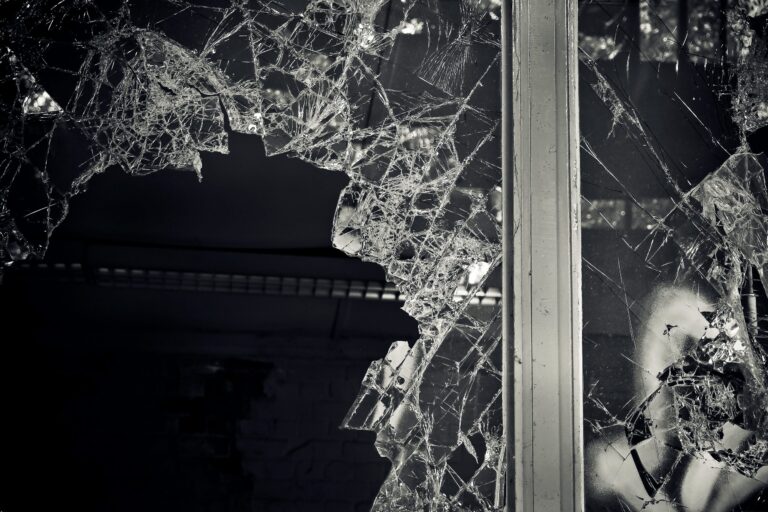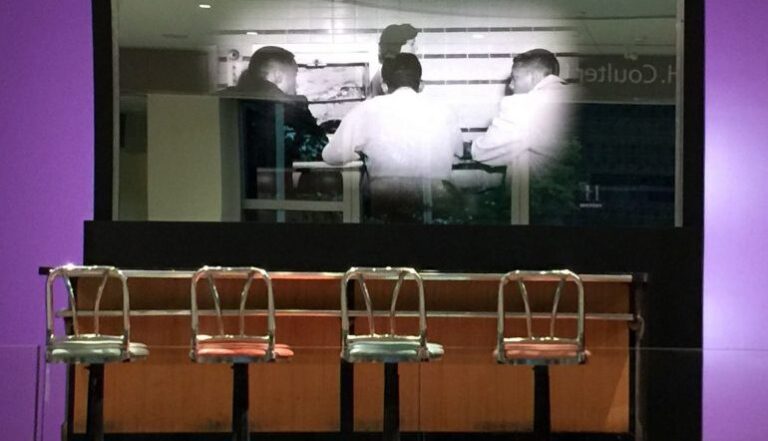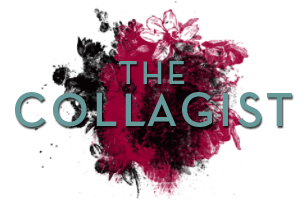Literary Boroughs #54: Boston, MA (Part Two)
The Literary Boroughs series will explore little-known and well-known literary communities across the country and world and show that while literary culture can exist online without regard to geographic location, it also continues to thrive locally. Part One of this post appeared earlier this week, as did a bonus Literary Borough walking tour of Beacon Hill by Emerson professor Megan Marshall. —Andrea Martucci, Ploughshares Managing Editor
Where to Write
Usually the Where to Write section is dominated by coffee shops, of which Boston/Cambridge/Somerville has many excellent specimens: Trident Café (see Part One for more info), Tealuxe, 1369, Simon’s, The Thinking Cup… and, of course, Dunkin’ Donuts. (Note to non-New Englanders: while you might reasonably assume that a “regular” coffee means black, in Boston Dunkin’ Donutses it means “drowned in cream and sugar.” We’re not complaining… We just thought you should know.)
Where to Drink (In a Classy, Literary Way)
Occasionally the Where to Write section also includes bars, and since Ploughshares was founded in Cambridge’s Plough and Stars pub, we should probably mention a few of those, too. AWP attendees will be conveniently located across the street from Bukowski’s, whose walls are covered with his poetry—though the downtown location will accommodate fewer people than most AWP panels, so if you really want the experience you might want to trek out to their Inman Square location. (This is also where they announce the winners of the bar’s annual “Pint and Pen Competition.”)
Other bars to check out include Crossroads Pub on Mass Ave, where Richard Yates used to hold court; the Brendan Behan Pub in Jamaica Plain, which often holds literary events in honor of its authorial namesake—including a reading, once, by J.P. Donleavy; and the nexus of literary drinking holes around Emerson’s campus, where the MFA program’s faculty and students can often be found: The Tam, Remington’s, and Sweetwater Tavern.
Where to Find Inspiration
Beyond cafes and bars, Boston has many more unique spots that are perfect for scribbling down a few words or simply seeking inspiration—so we asked our staff to share a few:
Margot Livesey: “Long before I first came to Boston I had read Henry James’s The Portrait of A Lady, but it took me over a decade to visit his grave—which is not in the justly famous, beautifully landscaped Mount Auburn Cemetery, but next door in the more modest Cambridge Cemetery. The James’s family plot is touchingly plain. William and Alice are there too. I don’t know who composed James’s epitaph but I am invariably moved as I read the words carved in grey stone: Novelist-Citizen of two countries, interpreter of his generation on both sides of the sea.
Another favourite place to visit is Louisa May Alcott’s house in Concord. Like many British schoolgirls, I adored Little Women and, of course, madly identified with Jo, the writer scribbling away. The house still feels as if the March family lives there.”
Ladette Randolph (editor-in-chief): “For me, though, being a writer in Boston is also about escaping from the hub bub and finding the perfect quiet place to actually settle down and write. One of those places for me is the Boston Athenaeum, just across the Common and up the hill from the Ploughshares office at 10 ½ Beacon Street. Although only the first floor is open to nonmembers, it’s worth a quick peek in the door since there’s plenty to see on the first floor: a lovely periodical room, a lecture hall where the Athenaeum regularly hosts both writers and musical groups, an exquisite children’s library, an exhibit space that hosts a range of exhibits, and a tasteful gift shop.
“Most weekdays when I’m working on a project, I try to find an hour to write in the Athenaeum’s fifth floor reading room. It’s a hushed, almost sacred space. Yet, to my delight (and amazement), members are allowed to bring their dogs, and not infrequently a Labrador or golden retriever will sigh as it rests on one of the many Persian rugs covering the floor, bringing to this elegant space an air of domesticity that never fails to make me happy. On nice days, the terrace is open, and if I’m really lucky I score a table there where I can look out over the rooftops of Beacon Hill.”
Akshay Ahuja (production manager): “A walk down this Commonwealth Avenue, close to the convention center, is a must for a Boston visit. In addition to the beautiful trees and jaw-dropping old houses, it is a reminder that Boston was one of the centers of the American abolitionist movement. You can find a statue of William Lloyd Garrison, founder of the journal The Liberator. Also, along the path, in the Boston Women’s Memorial, you can find a statue of Phyllis Wheatley, America’s first noted African-American poet, brought to America as a slave. In the Public Garden, where Commonwealth Avenue ends, you’ll also find a statue of Wendell Phillips, abolitionist and advocate for the rights of Native Americans.”
Ellen Duffer (intern): “The Boston Public Library Rare Books Department is the most pristinely beautiful room in the city, and is across the hall from the creepy marionettes exhibit. Also notable is the BPL Bates Hall Reading Room.”
Sarah Banse (senior reader): “What do all the great writers want to see when they come to Boston? Well, there’s plenty but when Charles Dickens made his second visit to Boston in 1867 he stayed at the Parker House (now the Omni Parker House) home of the Parker House Roll and birthplace of the Boston Crème Pie. One of the few sites he wanted to see while he was here was the laboratory of Harvard Professor, John Webster. Why? Macabre fascination.
“On Friday, November 23, 1849, Dr. George Parkman, one of the five richest men in Boston left his house at 8 Walnut Street on Beacon Hill and set out on some errands to Quincy Market and never returned. What ensued was a ruthless investigation, a gruesome discovery of body parts at the Harvard Medical School by Ephraim Littlefield, a Resurrection Man and janitor at the institution and the arrest, trial and execution of John Webster. Webster was found guilty of thumping Parkman on the head, dismembering the body, burning some and storing the rest in various locations in his office. (A large portion of the body was found under his privy, genitalia still intact.) Sixty-five thousand people witnessed the eleven-day trial in ten-minute intervals. Webster was hung outside of the Leverett Street Jail and buried in an unmarked grave on Copps Hill. The jail closed soon after the hanging and was replaced by the Charles Street Jail. Today, you can get a drink at the now defunct Charles Street, which is the swanky Liberty Hotel. If you are looking for other historical watering holes where they may have discussed the case try the Union Oyster House or the Warren Tavern in Charlestown. On a side note, 8 Walnut Street is currently for sale for a mere 4.8 million dollars.”
You should also be sure to check out Megan Marshall’s guided walking tour of Beacon Hill, published on the blog earlier this week.
Events / Festivals
The literary community in Boston is a welcoming one, and writers find numerous ways to connect. Grub Street Writer’s Network events are among the most popular, with the Muse and the Marketplace, in May, one of the biggest hits.
Founded in 2009, the Boston Book Festival has already become the city’s biggest literary event. Its inaugural year attracted 12,000 attendees, as well as more than 90 award-winning and renowned authors, including Jill Lepore, Orhan Pamuk, Robert Pinsky, Anita Shreve, and Cornel West; by 2012, it had grown to over 150 presenters and countless more attendees, and showcased the kind of thoughtful, fascinating panels the BBF does best—like the opening night conversation about adaptation between Buzz Bissinger, Rachel Cohn, Andre Dubus III, Nick Flynn, and Daniel Handler. And the schedule for 2013—the festival’s fifth anniversary—looks set to be even better!
Reading-wise, Harvard’s Woodberry Poetry Room frequently hosts noted poets and scholars to read and discuss the art, while Suffolk University’s Poetry Center and Boston University host their own series featuring influential and innovative poets. UMass Boston’s Global Voices Reading Series turns an eye to the international awareness and presence contemporary poets possess. Emerson College’s Writing, Literature, and Publishing department, in cooperation with Ploughshares, hosts its own reading series, bringing writers on-campus to read and discuss their work. The Harvard Bookstore also hosts many big name authors when they come to town.
While these readings tend to feature established writers, though, there are also plenty of reading series dedicated to the future of poetry and prose. Brookline Booksmith hosts two series—the BASH series and the Breakwater Reading Series—the latter of which showcases MFA poets and writers of UMass Boston, Boston University, and Emerson College. The Write on the Dot reading series is most closely affiliated with UMass Boston and focuses on writers in Boston’s “borough” Dorchester. Daniel Pritchard’s U35 Poetry Series brings to the community poets under the age of 35. The Blacksmith House, founded by Emerson’s Gail Mazur, also hosts terrific poetry readings!
Out of the Blue Gallery’s Dire series in Central Square bills itself as a literary “house party,” complete with beer, wine, and audience participation. Then there’s MassMouth, a nonprofit that holds live story slams, where people stand up and tell five minute, first-person, nonfiction stories. Says our marketing assistant Mimi Cook: “I’ve been to a number of slams, and they can be a lot of fun. Each slam is a competition, and the winners are invited to the finals in April.”
We thank all the members of the Ploughshares staff who contributed to this post: DeWitt Henry, Wes Rothman, Ellen Duffer, Dave Goldstein, Miriam Cook, Margot Livesey, John Skoyles, Ladette Randolph, Akshay Ahuja, and Andrew Ladd.


